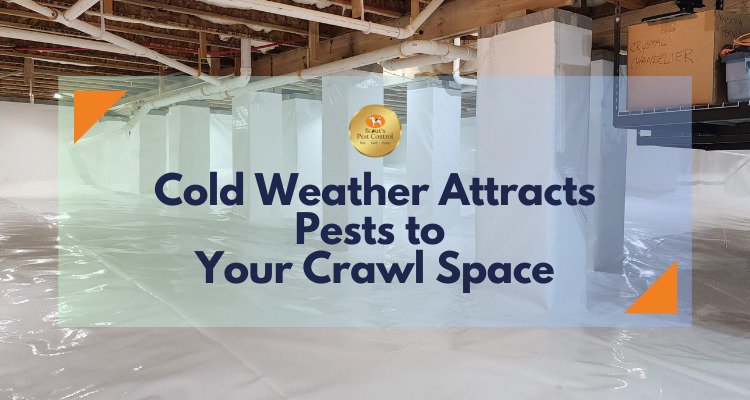Owing to its humid and subtropical climate, South Carolina has more than its fair share of Wood Damaging Insects (often abbreviated as WDI) — they thrive in the moist environment the state offers. If you are a South Carolina homeowner, you should therefore have some knowledge of the common wood damaging insects you are likely to encounter. Such knowledge lets you be on the guard against wood damaging insects and call in professional pest control services in your area if you spot signs of an infestation. Else you might soon be gaping at holes and tunnels in your house’s wooden members.
Americans lose over USD 5 billion every year dealing with insect-inspired damages to wooden members in their house: foundation sills, roof rafters, wooden flooring, beams, cabinets, furniture, and some more.
We’ll focus on South Carolina’s three most unwanted guests below (in order of state-wide population sizes): termites, wood-boring beetles and carpenter ants.
1) Termites.
Termites account for the majority of losses due to wood damaging insects’ activity in South Carolina, one of the most active regions for termites in the US. The state’s humid climate helps termites thrive. Unlike other wood damaging insects which just bore wood, termites eat wood — more precisely, the cellulose in wood. Estimates suggest over 15,000 homeowners in South Carolina spend an average of USD 3000 every year coping with damage caused by termites.

Three types of termites are most commonly found in South Carolina:
• Subterranean — Easily the most destructive of the termite lot, subterranean termites account for nearly 95% of all termite damage. A colony of these can have up to a million member termites. As their name suggests, these pests live in soil below and around your house. They then typically construct mud tubes that reach into the wood in your house. Subterranean termites have a varied diet: besides eating wood, they relish plants and paper too.
• Drywood — As the name suggests again, dry wood termites prefer working on dry wood: the type commonly found in attic joists and wooden walls. Their colonies are smaller, typically consisting of 2000-3000 termites. They get the moisture they need from humidity in the air and the wood they eat. Drywood termites enter homes via exposed wood or infested wooden furniture. The damage they cause is often extensive: these termites chew tunnels inside wooden structural members, hollowing and weakening them internally.
• Formosan — Formosan termites — also known as ‘super termites’ for the amount of destruction they cause — are actually a sub-type of subterranean termites, but their behavior differs significantly enough for a separate mention. Their colonies are huge and can number in several million. This gives them the numeric strength that permits a Formosan colony to eat wood at a much faster rate than other termites. Formosan termites are usually found in or near coastal regions.

It is not easy to visually differentiate between termite types, so if you spot any kind of termites in your home, leave further identification to the pest control professionals.
2) Wood-boring Beetles
Next to termites among South Carolina’s wood-destroyers are wood-boring beetles. These again are a family, common members of which are listed below.

• Old House Borers – These are long-horned beetles between 5/8 and 1 inch in length. Their color is brownish-black. Old house borers typically infest seasoned softwoods, pine in particular. Despite their name, old house borers are found more often in newer homes that have this kind of wood. The larvae, who take between 2 and 15 years to mature, are the members who cause damage as they penetrate the wood to feed.
• Powderpost Beetles – Powderpost beetles are between 1/8 and 1/4 inch long. The color varies from reddish brown to black. There are three different types of powderpost beetles:
1. Anobiid Powderpost Beetles – Also known as deathwatch beetles, anobiids can infest softwoods as well as hardwoods.
2. Bostrichid Powderpost Beetles – Also known as false powderpost beetles, bostrichids are mainly attracted to freshly cut hardwood, and fortunately cause much less damage than other wood-boring beetles.
3. Lyctid Powderpost Beetles – Also known as true powderpost beetles, lyctids infest only hardwoods, such as oak. Like old house borers, only the larvae cause damage to wood.
3) Carpenter Ants
In South Carolina, carpenter ants have a much lower population than termites and wood-boring beetles. But still, it is fairly common to encounter these ants.

Carpenter ants are large – between 5/8 inch and 1/2 inch in length. The color can range from black to red to yellow – or, at times, a combination of these. A carpenter ant colony may host over 10,000 workers. They like damp and dark areas for their habitat, and make nests inside wood. Notably, these ants have a marked preference for rotting wood and wood damaged by water.
Carpenter ants are fairly destructive: they can tear into almost any structural member. Using their powerful mandibles, they quickly tunnel through wood they have invaded to establish their nests.
Be Proactive When Dealing with Wood Damaging Insects
Homeowners tend to be reactive when it comes to pests, and thus less keen on regular inspections to check for signs of wood damaging insects. This is when things can get out of control. If you have standing water or moisture problems, your home is highly prone to rotting wood — and eventually a pest infestation. The best way to guard against pest infestation is not to wait for one, and start a regular pest control program. The costs are minuscule in comparison to purging a progressive infestation.





